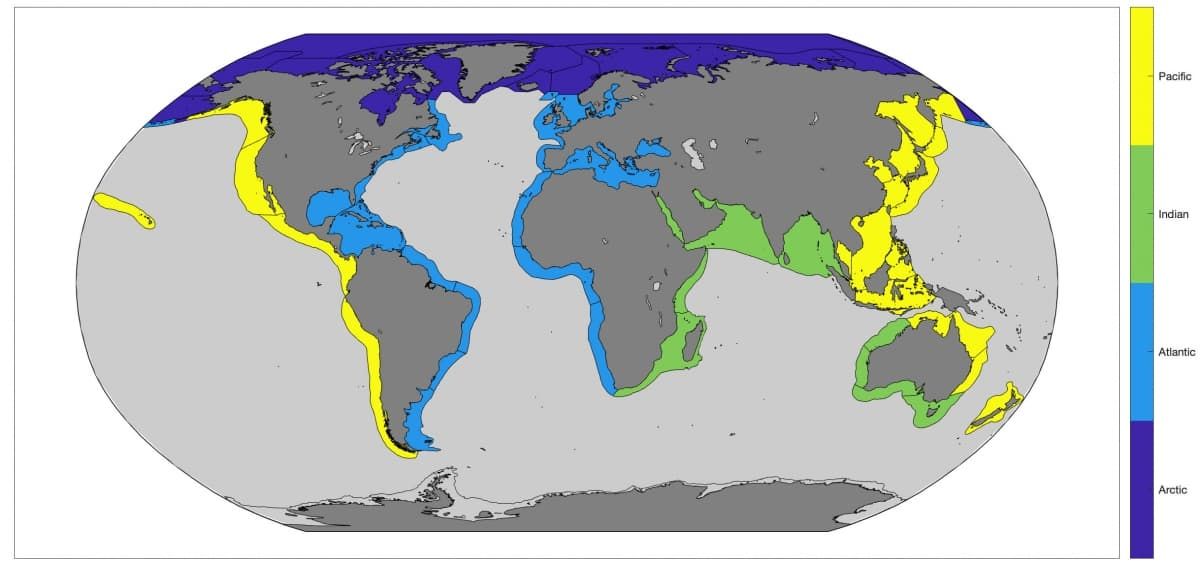
credit;SWNS
Ocean ‘heatwaves’ have become twice as common as previously feared, according to new research.
Just like on land, extreme warm spells also happen in the sea – wiping out fish, crustaceans, kelp and coral reefs.
Now a study has found marine ecosystems are suffering them frequently putting plant and animal life at risk – and the people who depend on them.
Lead author Dr Andrew Pershing, chief scientific officer at the Gulf of Maine Research Institute in the United States, explained: “Across the 65 ecosystems we examined, we expected about six or seven of them would experience these ‘surprises’ each year.
“Instead, we’ve seen an average of 12 ecosystems experiencing these warming events each year over the past seven years, including a high of 23 ‘surprises’ in 2016.”
The trend is fuelling global warming. Oceans absorb and release heat more slowly than air.
Marine heat waves can last for weeks or months – killing off kelp forests and corals, and harming fishing and aquaculture industries.
The study, published in the journal Proceedings of the National Academy of Sciences, is the first to explore their impact on both natural and human communities.
In the former such as fish, coral reefs and algae new species that prefer warmer conditions can often replace those that love the cold.
In ecosystems that heat up gradually the changeover should be able to keep pace, the analysis showed.
But when the change occurs much faster reductions in both biomass and diversity are likely.
The researchers also explored the challenge rapid ecosystem changes pose to people making decisions about ocean resources.
As the planet continues to warm, human communities will continue to adapt. But it is unclear whether they will cope as the climate trends accelerate.
Dr Pershing had previously identified the Gulf of Maine on the east coast of the US as one of the most rapidly warming areas in the world.
So his team examined the frequency of heat waves in 65 large marine ecosystems from 1854 to 2018.
These were defined as an annual average temperature two standard deviations – a measure used by statisticians – above that of the previous three decades.
They were identified across the world from the Arctic, North Atlantic and eastern Pacific oceans to the coast of Australia.
Moreover, these warming events occurred at around double the rate the scientists expected.
The researchers also compared forward-looking decisions based on climate trends to those made only on historical experiences.
Using an economic model, they found the former fare much better as the rate of warming increases.
And many marine ecosystems are already warming fast enough to apply this decision-making strategy.
Dr Pershing said: “We are entering a world where history is an unreliable guide for decision making.
“In a rapidly changing world, betting that trends will continue is a much better strategy.”
As the incidence of these extreme warming events continues to rise, the results highlight the importance of using climate projections and other predictive tools to make decisions about the future.
Until recently the formation, distribution and frequency of marine heatwaves had received little research attention.
A study last year also found the number had roughly doubled between 1982 and 2016.
The Swiss team predicted them to become more common and intense as the planet warms.
In 2018 seawater off San Diego hit a record 81.3 degrees Farenheit – the highest temperature in California since records began over a century ago.
In 2016 and 2017, persistent high ocean temperatures off eastern Australia killed off as much as half of the shallow water corals of the Great Barrier Reef. One in every four fish lives in or around coral reefs.
Climate change is warming ocean waters and causing shifts in the distribution and abundance of seaweeds, corals, fish and other marine species. Tropical fish are now commonly found in Sydney Harbour.
The phenomenon hit the headlines after a huge patch of unusually warm ocean water, roughly a third the size of the US, formed in the Gulf of Alaska in 2013.
It was dubbed The Blob after the 1958 horror film about an alien life form that keeps growing as it consumes everything in its path. It wiped out fish, birds and whales.